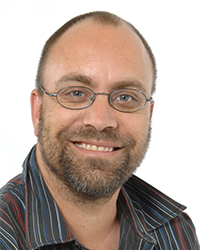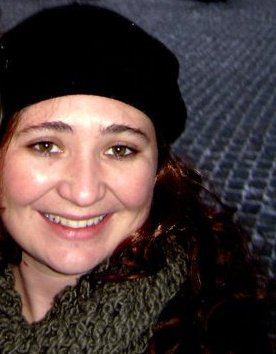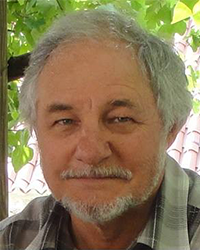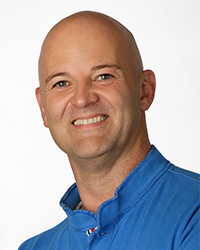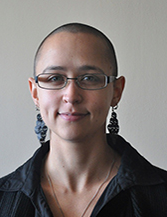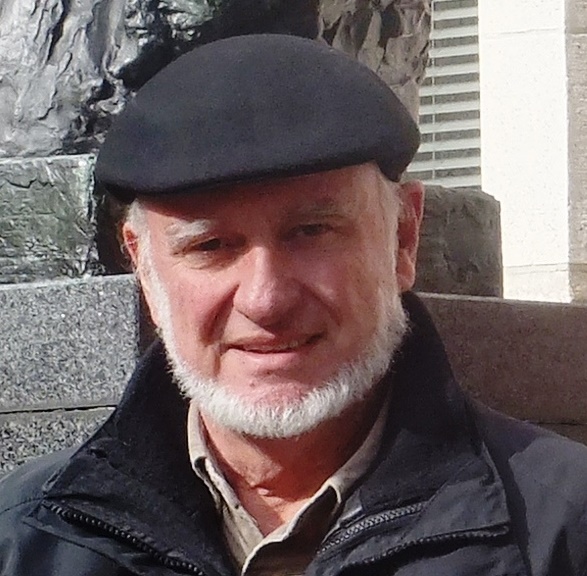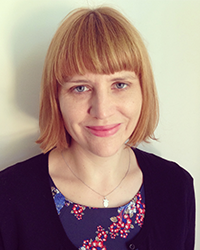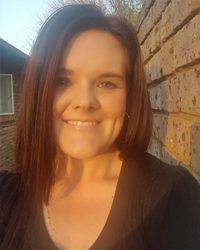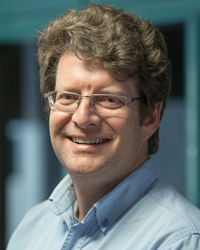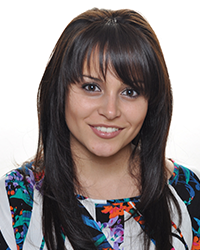- about
- partners
- people
- faq
- contact
Welcome to Taalportaal
Taalportaal (or Language Portal) is an interactive knowledge base about Dutch, (Sater)Frisian and Afrikaans. It provides access to a comprehensive and authoritative scientific grammar for these languages.
Up to now there has been no comprehensive scientifically-based description of the grammars of Dutch, Frisian and Afrikaans. This is a serious shortcoming, considering that
- language is seen as an important part of cultural identity and cultural heritage
- a large number of people learn these languages as a second language
- educated speakers frequently lack grammatical knowledge of their native language
- Dutch and Afrikaans an important object of study in linguistic theory and related fields of research
Taalportaal fills this gap by providing a thorough description of the phonology, morphology and syntax of the three languages.
Aims
The aim of Taalportaal is to collect existing information about the grammars of Dutch, Frisian and Afrikaans and to make it available through the internet in a way which is both accessible and scientifically viable. Such a language portal is unique in the world. Three core domains traditionally distinguished in linguistics – phonology, morphology and syntax – have been integrated into one portal using extensive cross referencing to ensure optimal linking. This offers interesting opportunities for linguists to discover relations and connections between linguistic phenomena that have remained hidden until now. Taalportaal is, however, equally important to people dealing with language and grammar in a more practical way, such as teachers, language advisors and authors developing teaching materials.
Sponsor
Taalportaal is a wide-ranging project involving many institutions in The Netherlands and South Africa. The Dutch part was funded by NWO (until 2015), the Netherlands Organisation for Scientific Research, while the Afrikaans part is sponsored by the Suid-Afrikaans Akademie vir Wetenskap en Kuns, Afrikaanse Taal- en Kultuurvereniging, Noordwes-Universiteit and Dagbreek Trust, until the end of 2019. The Saterland Frisian part is sponsored by the Niedersächsisches Ministerium für Wissenschaft und Kultur, the Oldenburgischen Landschaft, the Gemeinde Saterland, the Beauftragte der Bundesregierung für Kultur und Medien, the Bundesministerium des Innern und für Heimat, the Seeltersk-Kontoor and the Fryske Akademy.
Partners
Taalportaal is a collaborative effort of the Meertens Instituut, Leiden University, the Instituut voor Nederlandse Taal, the Fryske Akademy, and the Virtuele Instituut Vir Afrikaans. In addition, researchers from a number of universities and institutes, both from the Netherlands and abroad, are involved.
The Taalunie (Dutch Language Union) and the Royal Dutch Academy of Sciences have agreed to guarantee the preservation and the curation of the Language Portal after its completion. Languages change continuously and new insights about the linguistic properties of Dutch, Frisian and Afrikaans will arise from ongoing linguistic research. Therefore Taalportaal will be extended and updated regularly.
Collaboration with CLARIN
Taalportaal has been developed in close collaboration with the CLARIN-NL project.
From May until October 2015, a CLARIN-NL funded pilot project (NL-15-001:TPC) was run with the aim of enriching parts of the Taalportal content with manually constructed xpath queries to treebanks and CELEX. This project was carried out by a team consisting of Jan Odijk (Utrecht University), Ton van der Wouden (Meertens Institute), Marjo van Koppen (Utrecht University), Gosse Bouma (Groningen University), Matje van de Kamp (Taalmonsters) and Frank Landsbergen (INT), together with students from the universities of Utrecht (Sylvia Wijsman, Jorik van Engeland & Erlinde Meertens) and Groningen (Martin Kroon, Mara van der Ploeg, Iris Scholten & Denise Zijlstra). The project was presented at the annual Clarin conference in Wrocław, Poland in 2015.
The main idea behind this pilot project is that the user, while reading a grammatical description or studying a linguistic example, is offered the possibility to find both potential examples and counterexamples of the pertinent constructions in a range of annotated corpora, as well as in a lexical database containing a wealth of morphophonological data on Dutch. This pilot has explicitly focused on resources with rich linguistic annotations, since the goal was to do more than just string searches: searching for construction types and linguistic annotations themselves is one way to reduce the problem of the massive ambiguity of natural language words.
In light of the restricted resources, in terms both of time and money, this CLARIN project is not aiming at exhaustivity, that is, not all grammatical descriptions and not all examples have query links. TPC is thus explicitly to be seen as a pilot project, aiming for a proof of concept by showing the feasibility of efficient coupling of grammatical information with queries in a number of corpora.
Manually added xpath queries can be recognized by the clickable  icon.
icon.
About this release
Current release: version 2.2 (December 2023)
Previous releases:- version 2.1 (May 2020)
- version 1.8 (March 2020)
- version 1.7 (May 2019)
- version 1.6 (November 2018)
- version 1.5 (March 2018)
- version 1.4 (September 2017)
- version 1.3 (March 2017)
- version 1.2 (June 2016)
- version 1.1 (January 2016)
- version 1.0 (December 2015)

The Meertens Institute, established in 1926, has been a research institute of the
Royal Netherlands Academy of Arts and Sciences (KNAW) since 1952. Members of the
institute study the diversity in language and culture in the Netherlands. The focus
is on contemporary research into factors that play a role in determining social
identities in the Dutch society. The main fields of research are ethnological study
of the function, meaning and coherence of cultural expressions as well as structural,
dialectological and sociolinguistic study of language variation within Dutch in the
Netherlands, with the emphasis on grammatical and onomastic variation.
Apart from research, the institute also concerns itself with documentation and providing
information to third parties in the field of Dutch language and culture. It
possesses a large library, with numerous collections and a substantive documentation
system, of which databases are a substantive part.

The Fryske Akademy is the research centre of Fryslân. Its work revolves around Fryslân.
The Fryske Akademy concentrates on fundamental and applied academic research into the
Frisian language, culture and society. The results of the research are primarily of academic
interest, yet they certainly have social pertinence and relevance to the province of Fryslân
and far beyond. Even though the Fryske Akademy has first and foremost a research role, it
provides academic education in the field of Frisian studies at the universities of Leiden and Amsterdam.

The Instituut voor de Nederlandse Taal was founded in 1967 as a Flemish-Dutch collabaration.
In 2016 the Institute has been transformed into a renewed institute with a broader mission: the Dutch Language
Institute (Instituut voor de Nederlandse Taal). Anyone who wants to know anything about the
Dutch language through the centuries will find their answer at the Dutch Language Institute.
The institute takes a central position in the Dutch-speaking world as a developer,
keeper and distributor of sustainable language resources, using reliable scholarly methods.
It is responsible for the creating, archiving and maintaining of Dutch corpora, lexicons,
dictionaries and grammars, thereby providing the necessary building blocks for the study of the Dutch language.

The Leiden University Centre for Linguistics (LUCL) is one of seven
institutes within the Faculty of Humanities of Leiden University. It unites the linguistic
research and teaching at Leiden University. LUCL is also responsible for
the Academic Language Centre as well as for most language teaching within the Faculty.

VivA is a research institute and service provider for Afrikaans in digital context and is a registered non-profit company. The core business of VivA is to expand the use and quality of Afrikaans locally and internationally through:
- The comprehensive description and study of Afrikaans;
- The development of comprehensive digital and other resources, support structures and platforms;
- The delivery of practical Afrikaans language services through technology.
Which services and products does VivA provide:
- Woordeboekportaal (Dictionary portal), where users can search for words in various dictionaries;
- Taalportaal (Language portal), where users can get more information on the phonology, morphology and syntax of Afrikaans;
- Adviesportaal (Advice portal), where users can submit queries directly to the language adviser
- Korpusportaal (Corpus portal), where users can search in huge collections of text for patterns in language use
- Inligtingsportaal (Information portal), where users can participate in inter alia webinars.
Below is a list of people who have contributed to Taalportaal over the years.
Authors
Dutch
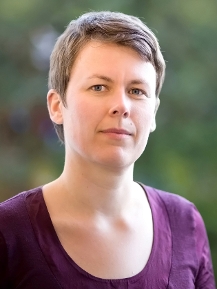

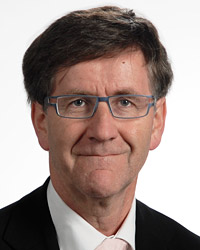
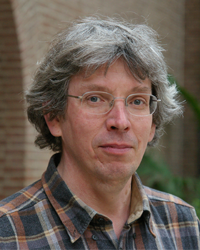

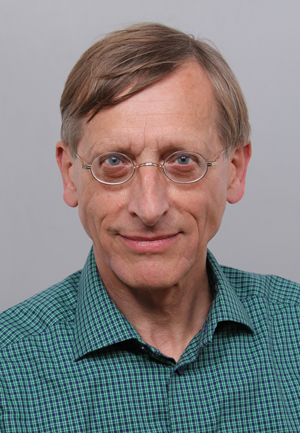

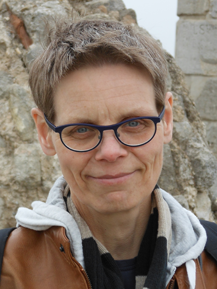
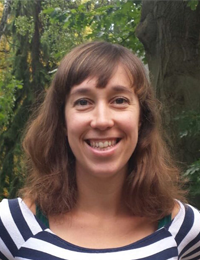
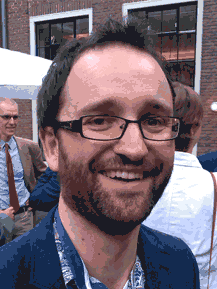


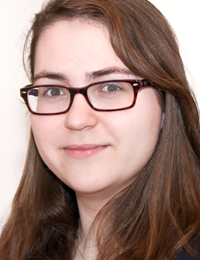
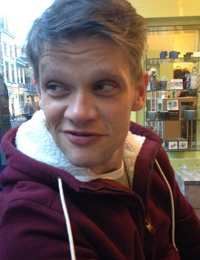

Frisian

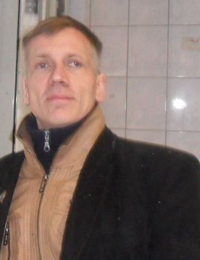
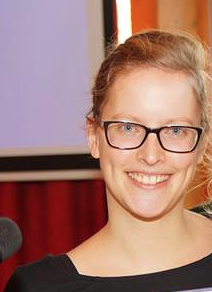
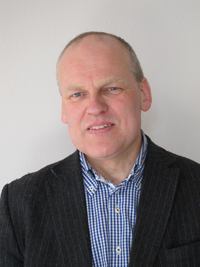
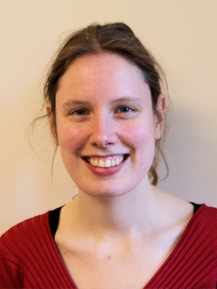
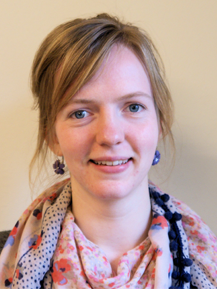
Saterfrisian

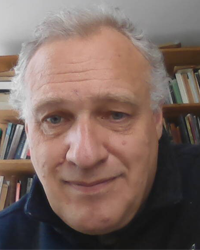
Afrikaans
Advisors
Executive Board
VivA Board
Technical Advisory Board
Scientific Advisory Board
ICT
This page contains frequently asked questions about Taalportaal. Do you have a question that is not answered below? Then contact our coordinator Ton van der Wouden.
What is Taalportaal?
Taalportaal is a large project aiming at a comprehensive and authoritative scientific grammar, originally only for Dutch and Frisian. Since 2015, Afrikaans has also been added to the original project. In 2023, Saterfrisian has been added. Taalportaal is an interactive knowledge base about these languages, covering syntax, morphology and phonology. The project is a collaborative effort of the Meertens Instituut, Leiden University, the Instituut voor Nederlandse Lexicologie, the Fryske Akademy, and the Virtuele Instituut Vir Afrikaans. The Dutch/Frisian part is funded by NWO, the Netherlands Organisation for Scientific Research; the Afrikaans part is funded by the Suid-Afrikaans Akademie vir Wetenskap en Kuns, Afrikaanse Taal- en Kultuurvereniging, Noordwes-Universiteit and Dagbreek Trust.
What is the target audience of Taalportaal?
The Taalportaal project aims at the construction of a comprehensive and authoritative scientific grammar website for Dutch, Frisian and Afrikaans. The primary target audience is the international scientific community, as especially Dutch has been, and still is, an important object of study in linguistic theory and related fields of research. However, users less versed in linguistic theory will find a host of interesting information in the Taalportaal as well.
Waarom Engels?
Dutch/Frisian: We krijgen met enige regelmaat de vraag waarom het Taalportaal in het Engels is en niet in het Nederlands (of het Fries of het Afrikaans). De reden voor deze taalkeuze is dat het Taalportaal in de eerste plaats bedoeld is voor de internationale wetenschappelijke gemeenschap, waar de voertaal tegenwoordig Engels is. Taalkundigen betrekken tegenwoordig vaak tientallen talen van over de hele wereld in hun overwegingen, zonder die talen machtig te zijn, en dat kan omdat de relevante feiten beschikbaar zijn gemaakt door collega's die die talen wel kennen. De standaardgrammatica voor het Nederlands ín het Nederlands is de Algemene Nederlandse Spraakkunst.
Afrikaans: Ons kry dikwels die vraag waarom Taalportaal slegs in Engels en nie in Afrikaans (of Nederlands of Fries) beskikbaar is nie. Die rede vir hierdie taalkeuse is dat Taalportaal in die eerste plek bedoel is vir die internasionale wetenskaplike gemeenskap, waar die voertaal tans hoofsaaklik Engels is. Taalkundiges betrek dikwels tientalle tale vanoor die hele wêreld in hulle navorsing, sonder dat hulle dié tale magtig is. Dit kan slegs gedoen word as die relevante feite oor die ander tale beskikbaar gemaak word deur kollegas wat wel die tale ken.
Which Dutch is covered in Taalportaal?
Dutch is considered a pluricentric language with different (developing) standards in The Netherlands, Belgium and Surinam, and also in Aruba, Curaçao, and Sint Maarten. For the time being, the Taalportaal project mostly deals with the Dutch standard variety as it functions in the Netherlands.
 The Taalunie offers more information about Dutch and its different standards.
The Taalunie offers more information about Dutch and its different standards.
Which Afrikaans is covered in Taalportaal?
Afrikaans, one of the eleven official languages of the Republic of South Africa, is a close relative to Dutch, but with a separate and complex history since the seventeenth century. The Taalportaal project deals mostly with what we call Algemene Afrikaans (General Afrikaans); i.e. those varieties of Afrikaans generally encountered in contemporary spoken and written media. We therefore do not only deal with Standard Afrikaans, but also with other usage varieties that can be seen or heard in modern day media.
 Roots of Afrikaans: selected writings of Hans den Besten, edited by Ton van der Wouden.
Roots of Afrikaans: selected writings of Hans den Besten, edited by Ton van der Wouden.
What is the relationship between the Syntax of Dutch and Taalportaal?
Hans Broekhuis has together with colleagues been working on the Syntax of Dutch, a comprehensive scientific description of the syntax of current Dutch. The syntactic parts of the Taalportaal lean heavily on this uniquely detailed work.
 The Syntax of Dutch at Amsterdam University Press.
The Syntax of Dutch at Amsterdam University Press.
What is the etymology of the word X?
The Taalportaal does not provide information on etymology. However, the 'Etymologiebank' is a comprehensive on-line resource (in Dutch) on Dutch and Afrikaans etymology: wherever possible, examples in topics are linked to this site.
What languages are spoken in the Netherlands and Belgium?
Dutch ('Nederlands') and Frisian ('Fries') are the official languages of The Netherlands. Next to that, Sign Language of the Netherlands is used by the Deaf community, as well as over hundred immigrant languages, from Adyghe to Zazaki. In Belgium, there are three official spoken languages (Dutch, French, German), two signed languages, to wit Flemish Sign Language and French Belgian Sign Language (more related to each other than to either Sign Language of the Netherlands or French Sign Language), as well as a great number of immigrant languages. Moreover, the area boasts a number of regional varieties (dialects and dialect groups), a.o. Gronings and Stellingwerfs in The Netherlands, and Limburgish and Brabantish in both countries. Contrary to what Ethnologue and other sources suggest, Flemish ('Vlaams') is not a separate language, but rather a group of dialects and regiolects used in large parts of Belgium and in de South-Western part of the Netherlands.
What languages are spoken in South Africa?
South Africa has a rich and diverse multilingual culture with eleven official languages, namely two Germanic languages (English and Afrikaans), four Nguni languages (Ndebele (isiNdebele), Swati (Siswati), Xhosa (isiXhosa), and Zulu (isiZulu)), three Sotho languages (Northern Sotho (Sesotho sa Lebo or Sepedi), Southern Sotho (Sesotho), and Tswana (Setswana)), and two other Bantu languages (Tsonga (Xitsonga) and Venda (Tshivenda)). These languages are granted official status in chapter one of the Constitution of the Republic of South Africa (6 of 1996), stating that ‘…the state must take practical and positive measures to elevate the status and advance the use of these languages’.
Other languages used in South Africa, include, amongst others, Fanagalo, Lobedu (Khilobedu), Northern Ndebele (Sindebele), Phuthi (Siphuthi), Khoi, Nama and San languages, and South African Sign Language. Significant numbers of immigrants from Europe, elsewhere in Africa, and the Indian subcontinent means that a wide variety of other languages can also be found in parts of South Africa.
| SOUTH AFRICAN LANGUAGES 2011 | ||
| Language | Number of home language speakers | % of total |
| Afrikaans | 6 855 082 | 13.5% |
| English | 4 892 623 | 9.6% |
| isiNdebele | 1 090 223 | 2.1% |
| isiXhosa | 8 154 258 | 16% |
| isiZulu | 11 587 374 | 22.7% |
| Sepedi | 4 618 576 | 9.1% |
| Sesotho | 3 849 563 | 7.6% |
| Setswana | 4 067 248 | 8% |
| Sign language | 234 655 | 0.5% |
| SiSwati | 1 297 046 | 2.5% |
| Tshivenda | 1 209 388 | 2.4% |
| Xitsonga | 2 277 148 | 4.5% |
| Other | 828 258 | 1.6% |
| TOTAL | 50 961 443 | 100% |
How do I cite Taalportaal?
- If you would like to cite the Taalportaal project, then please add the following reference to your paper:
Landsbergen, Frank, Carole Tiberius and Roderik Dernison (2014). ‘Taalportaal: an Online Grammar of Dutch and Frisian’. In: Proceedings of the Ninth International Conference on Language Resources and Evaluation (LREC'14), 2206-2210. [pdf]
Or in bibtex format:
-
@InProceedings{LANDSBERGEN14.983,
- author = {Frank Landsbergen and Carole Tiberius and Roderik Dernison},
- title = {Taalportaal: an online grammar of Dutch and Frisian},
- booktitle = {Proceedings of the Ninth International Conference on Language Resources and Evaluation (LREC'14)},
- year = {2014},
- month = {may},
- date = {26-31},
- address = {Reykjavik, Iceland},
- editor = {Nicoletta Calzolari (Conference Chair) and Khalid Choukri and Thierry Declerck and Hrafn Loftsson and Bente Maegaard and Joseph Mariani and Asuncion Moreno and Jan Odijk and Stelios Piperidis},
- publisher = {European Language Resources Association (ELRA)},
- isbn = {978-2-9517408-8-4},
- language = {english} }
- If you would like to cite a topic, click the 'cite' button on the topic page, on the right side of your screen. You can then copy-paste the preferred reference layout (APA, Bibtex, Chicago, MLA and Mouton) to your paper.
Why I do not get a bibliographic reference?
Bibliographic references that are used within a topic are listed at the bottom of the page. It is also possible to click on a reference within the text to get the full publication in a popup. In the current release, the references in topics from Afrikaans and from the Verbs and Verb phrases part of Dutch syntax are incomplete, and are therefore not working correctly.
